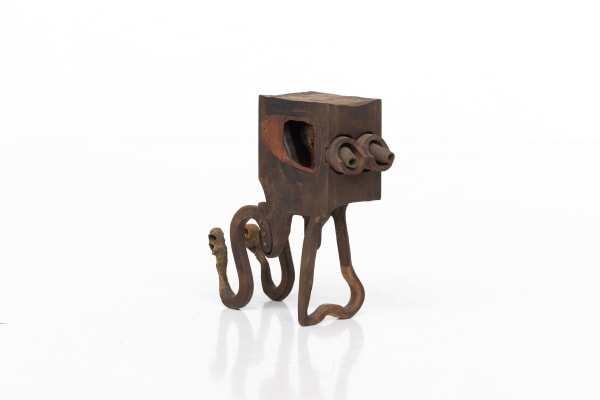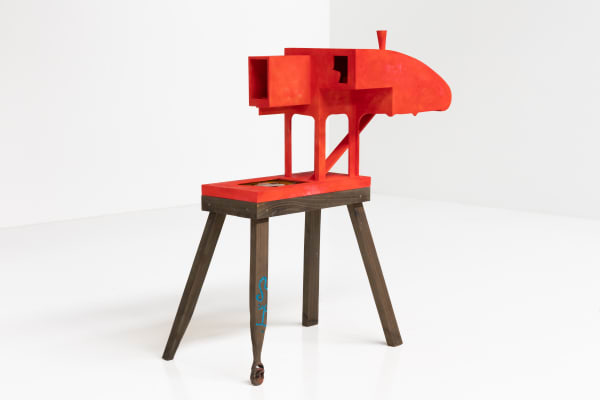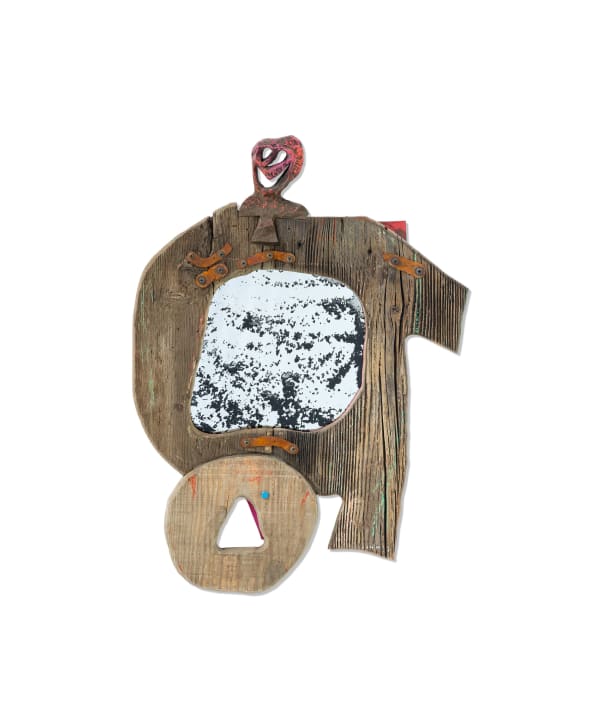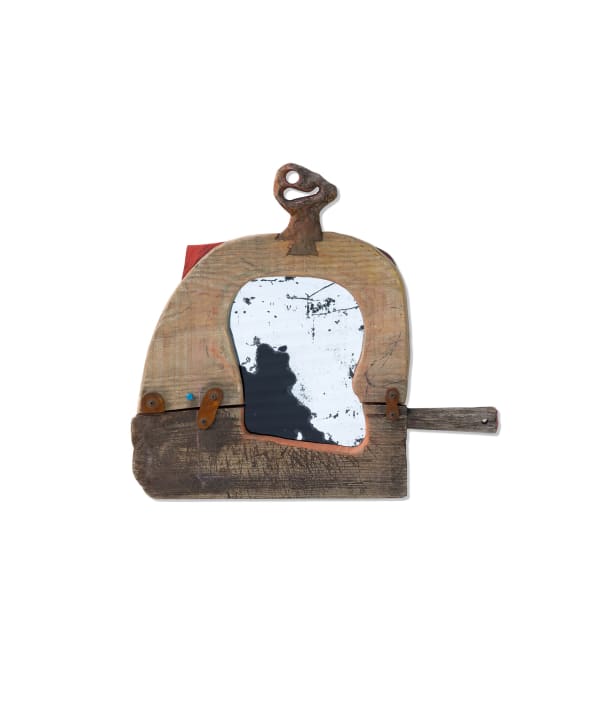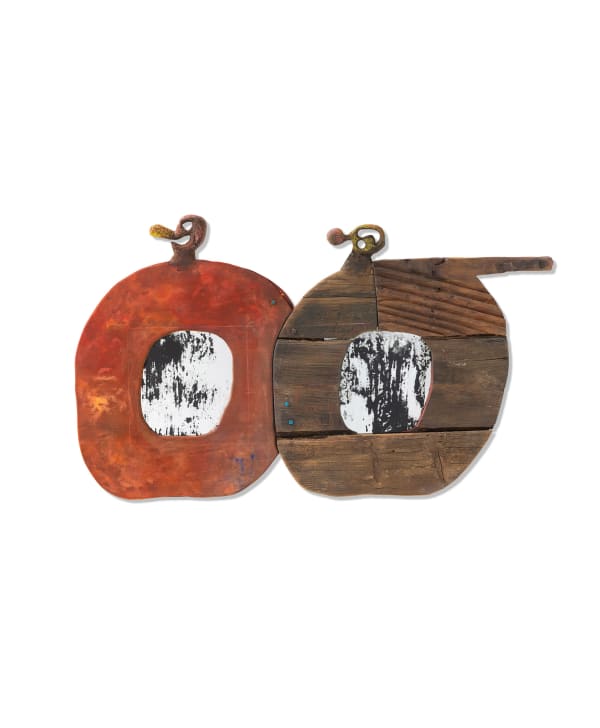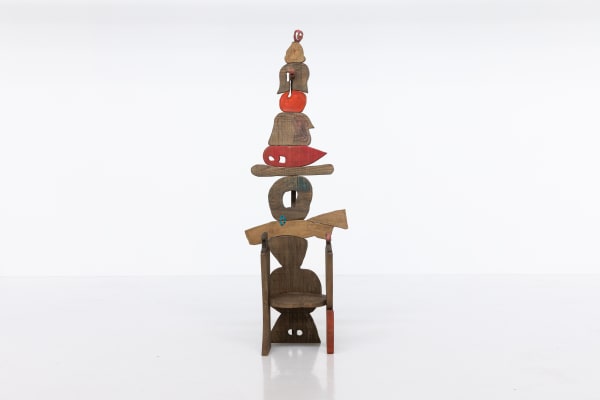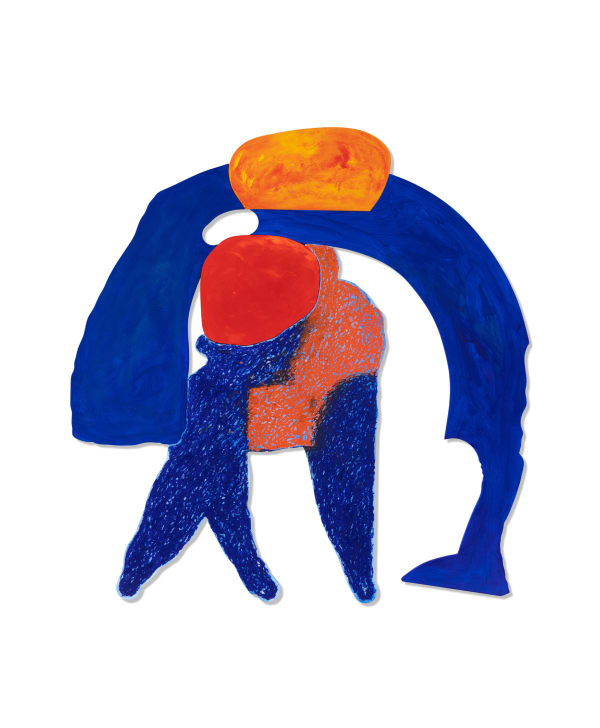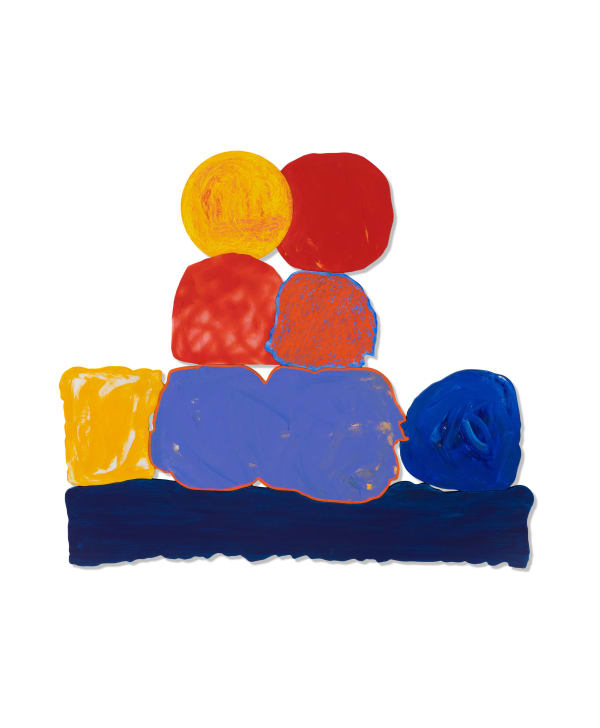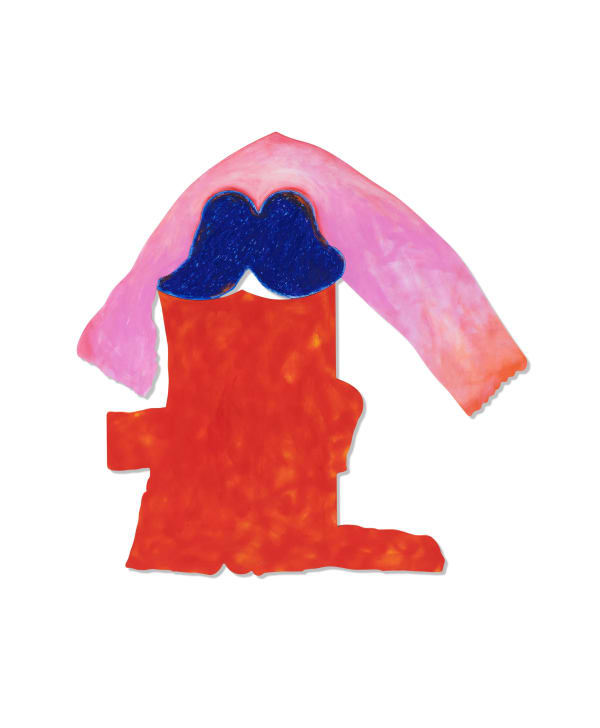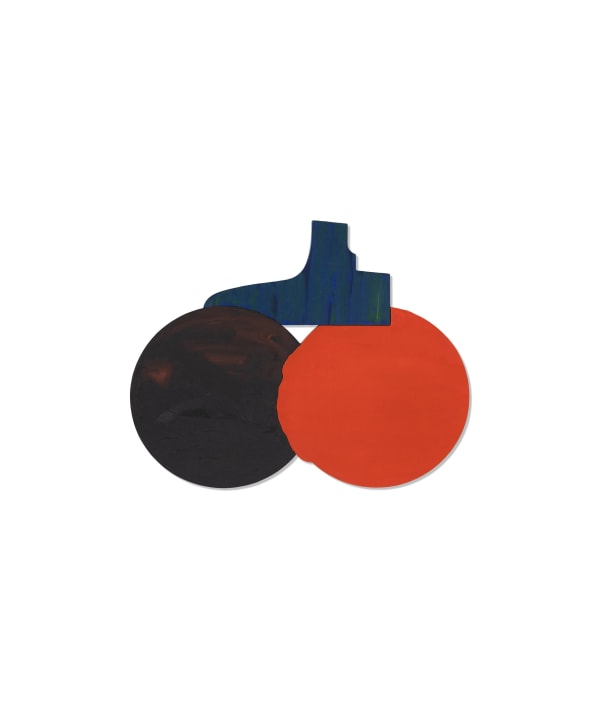Vistors II : Solo Exhibition by Serban Ionescu
‘Visitors II’ is an extension of Serban Ionescu’s previous solo exhibition at Everyday Gallery. The show is reinterpreted and re-visited with a new curation.
Emulating the human face, a mask expresses an emotion, a certain feeling, a state of mind. It does so in a plastic, expressive, and often even grotesque manner. This expressiveness causes us to treat the mask as something that is alive, almost human. But the monomaniacal rigidity by which a mask expresses one and only one sentiment or feeling is squarely at odds with the immense plasticity and subtle emotional depth of the human face. This paradoxical combination imbues the mask with a decidedly uncanny, inhuman feature.
In the ‘Visitors series’, the Romanian born American artist Serban Ionescu (1984) playfully engages with this phenomenon. Ionescu presents us with a series of colorful cut-out abstract paintings, faux-aged mirrors in an organic wooden frame, a wooden chair of almost three meters high, and a smaller series of sculptures. In the mirrors, chair, and sculptures, Ionescu combines the easily recognizable shapes and functionality of everyday designer objects (a chair, a small table, a mirror) with more organic, almost animal- or human-like shapes. Ionescu purposely lets these two sorts of forms clash with one another, undoing the functionality of the design object that he is playing with. The chair becomes an assemblage of anthropomorphic shapes, the side table’s legs turn into actual limbs that crawl over the floor and end in what appear to be the heads of unknown entities.
The organic forms are clearly reminiscent of animals or humans, but they nevertheless remain amorphic; it is as if they are not yet fully shaped, still struggling to find their definite form. And most certainly they are struggling: like a mask, they have their grimaces, their expressive and contorted shapes, but also their (wooden) rigidity. It is as if these creatures are emerging from the materials from which they were crafted, trying to escape their materiality. But they remain stuck in the process, much to their dismay.
In Ionescu’s colorful cut-out paintings, the same sense of animated materiality is present. Painting in strong colors, the cut outs suggest the shapes of living entities. Like the shapes from which the wooden chair was assembled, Ionescu is minimalistic but highly effective in how he produces this sense of things being animated. Two round holes in the middle of a wooden panel suffice to create the suggestions that empty eyes are starting at us, a sharp protrusion from a round cut out creates the suggestion of a nose, and the use of elongated shapes suggest limbs. Through the careful juxtaposition of these different works, the ‘Visitors series’ conjures up a space that feels as if it is being visited by fleeting, transient entities that are momentarily stuck in their materiality but are also looking for a way to escape. They are, after all, just visiting.
All of this is done with a careful attention to the materiality of art and design. Ionescu, who was trained as an architect and has also done innovative furniture design, is always looking for the intersection where the functionality of a designer object collapses and turns into a work of art that is freed from its function.
The mirrors that the ‘Visitors series’ present are a case in point. The mirrors are new, but they have been artificially aged. While this enhances their tactility and even renders some of the remaining clear spots, something strangely luxurious, it also means that the mirrors no longer function as mirrors (or at least not in a very effective way). As design objects, they have lost their function … like a mere passersby.
Original text by Bram Ieven


